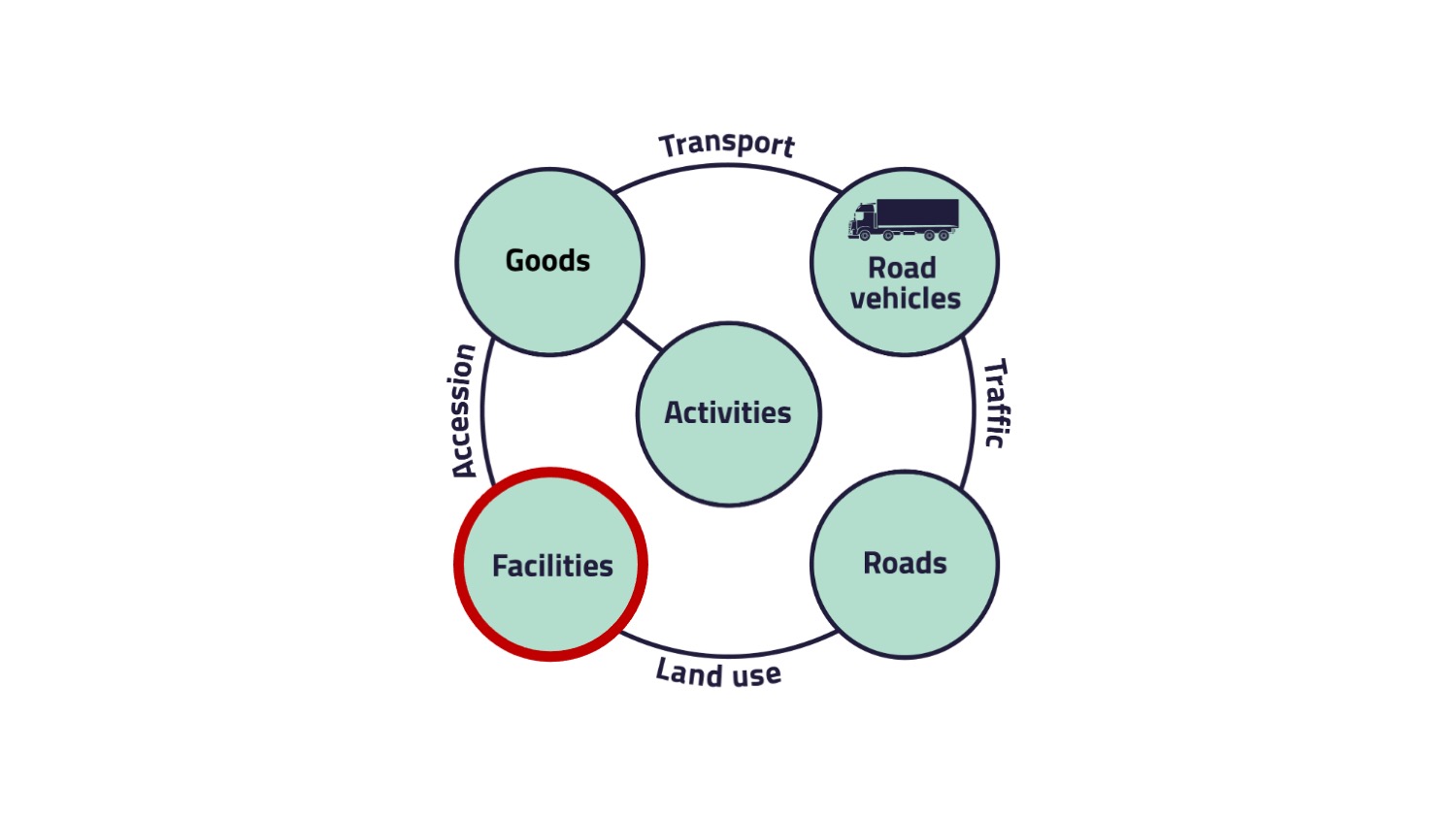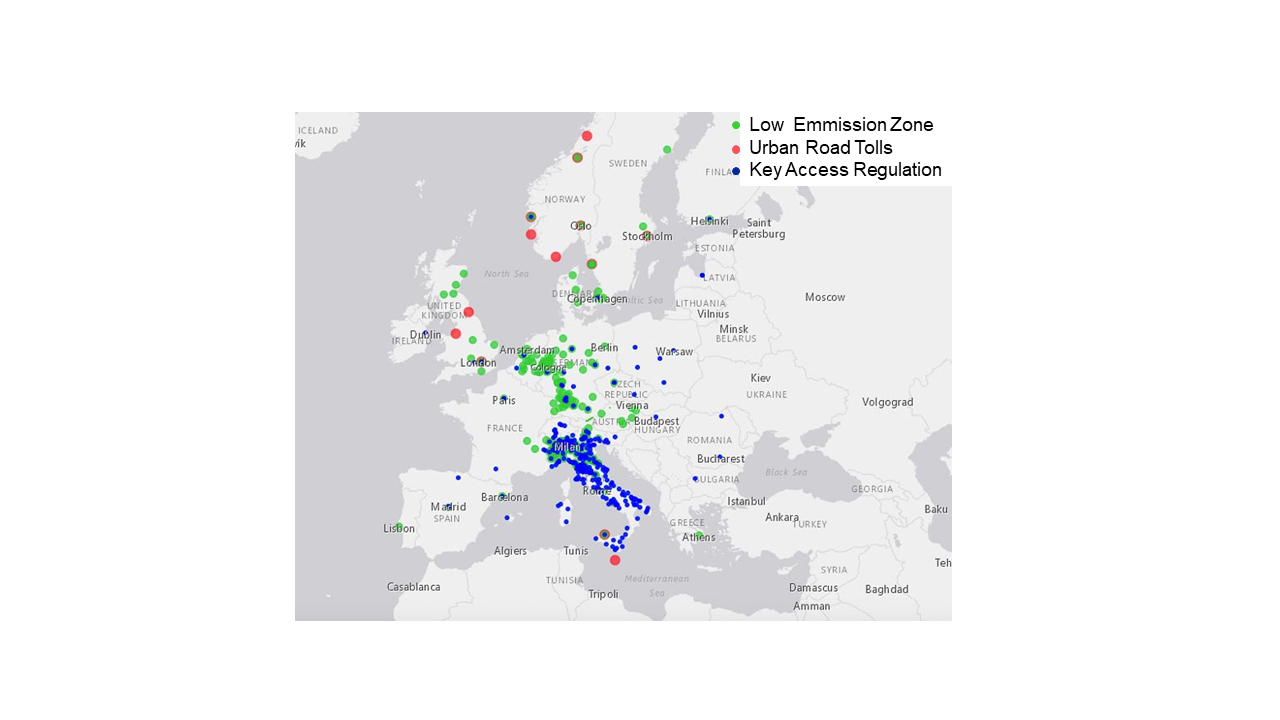Road Transport System
6. Facilities
On this page, the last element "Facilities" is presented to you.
Facilities are the interfaces at the start and end points as well as in the supply chain. From a market point of view, the start or end point is the location of the consignor or consignee. Both market participants can be, for example, private households, public authorities or companies from all branches.

The relation between facilities and goods is called accession.
Accession
- From a micro perspective, accession is the possibility of goods being handed over to the recipient. Here it is usually construction measures of the building that limit the possibilities of direct transfer of goods (e.g. via a ramp) from the road vehicle to the recipient.
- The meso perspective refers to the accessibility of the location of the consignee. Consignees with many suppliers in trade or industry or, for example, on large construction sites often experience traffic jams and significant time losses on the part of the carrier.
- The macro perspective is the condition of the infrastructure to access a location. The dimensions (weight and size of the permissible vehicles) play a role here, as do possible restrictions on the time or space available for certain types of vehicles. But also, the density of the traffic flow on the infrastructure restricts the accessibility of a location in the macro perspective.
Sometimes, the accessibility of the road infrastructure is restricted. This map shows, where urban access regulations exist. You can see that different regions have different types of urban access restrictions. Mainly, the access is restricted with Low Emissions Zones (green) or other Key Access Regulations (blue, especially in Italy). Low emission zones are a form of urban action against traffic-related pollution.
For a more comprehensive overview of applicable urban access regulations, feel free to visit this website:
Literature
Clausen, U.; Lenz, B. (2014): Integration logistischer Knoten und ihres spezifischen Verkehrs-aufkommens in die Nachfragemodellierung des Güterverkehrs. DFG-Projekt (Projektnummer: 179833699).
Flämig, H., Sjöstedt, L., Hertel, C. (2002): Multimodal Transport: An Integrated Element for Last-Mile-Solutions? Proceedings, part 1; International Congress on Freight Transport Automation and Multimodality: Organisational and Technological Innovations. Delft, 23 & 24 May 2002. (modification of Sjöstedt 1996)
Sadler Consultants Ltd (2020): Urban Access Regulation by Map. URL: https://urbanaccessregulations.eu/userhome/map (last access: 21.06.2021)
